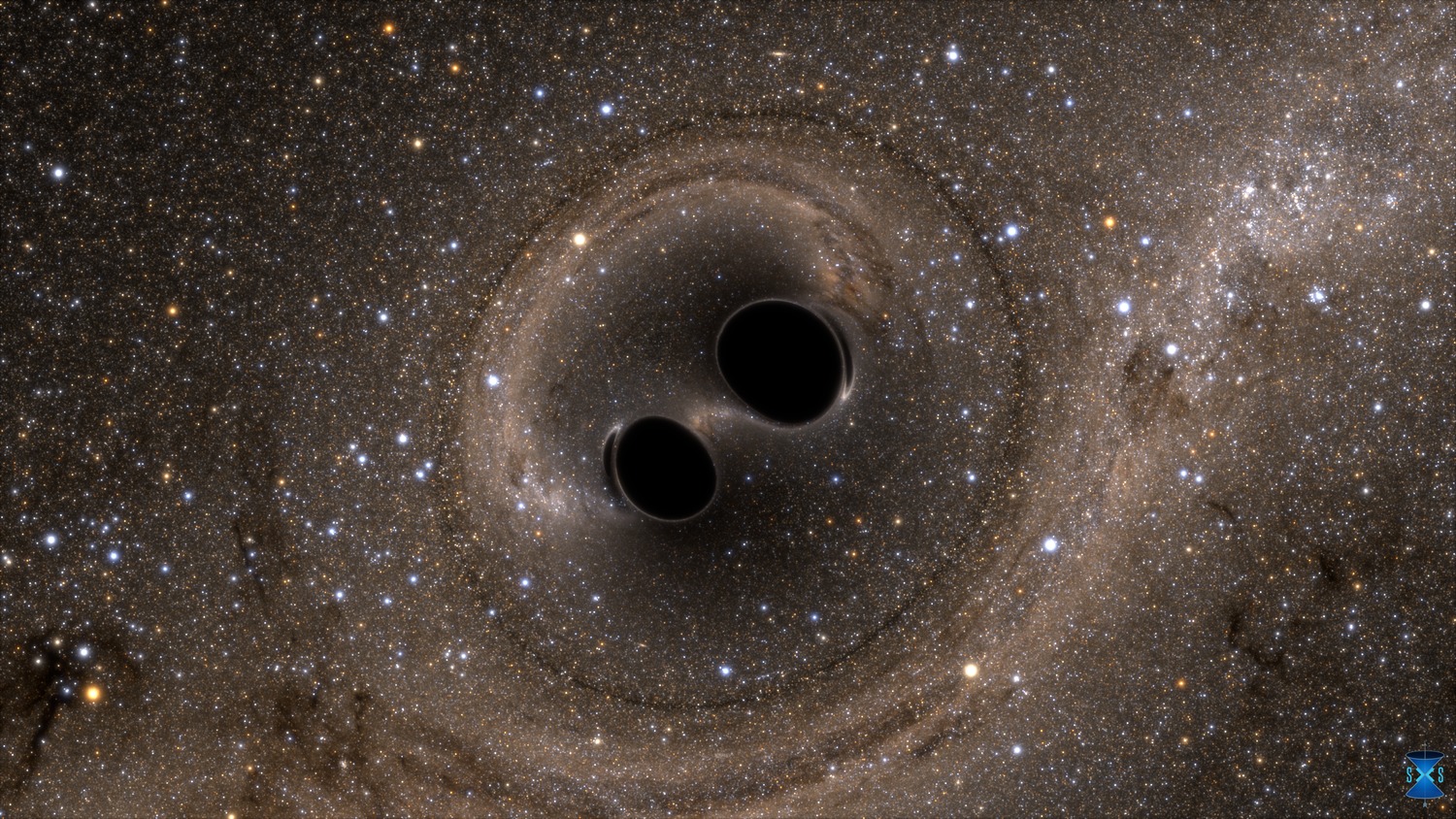Gravitational Waves Found! Physicists' Glee Ripples Through Social Media

A cosmic collision between two massive black holes 1.3 billion years ago sent shockwaves undulating through the universe's space-time fabric that have been observed from Earth for the first time, researchers announced today (Feb. 11). The much-anticipated report generated its own waves of enthusiasm and celebration across social media, as astrophysicists and science nerds alike shared their delight in the new finding.
Known as gravitational waves, the ripple effect was glimpsed by the Laser Interferometer Gravitational-Wave Observatory (LIGO) on Sept. 14, 2015, at 5:51 a.m. EDT (09:51 UTC). And here on Earth, the ancient merger also generated hashtags, including #GravitationalWaves, #LIGO and #EinsteinWasRight, referring to Albert Einstein's prediction that gravitational waves existed. The new LIGO results confirm Einstein's hunch, which he detailed 100 years ago in his general theory of relativity.
Reactions to the announcement from astrophysicists and space enthusiasts on Twitter were swift and euphoric.
Congratulatory tweets rolled in from LIGO's fellow observatories, like NASA's James Webb Space Telescope and the European Space Agency's Herschel space observatory, and from space agencies, with NASA's Jet Propulsion Laboratory tweeting, "Hooray for #science!" as they extended praise to the National Science Foundation (NSF), California Institute of Technology (CalTech) and the Massachusetts Institute of Technology (MIT), all collaborators on the discovery.
The journal Nature tweeted a reaction from eminent British physicist Stephen Hawking:
Theoretical physicist Brian Greene (@bgreene) called the news "stunning," adding, "Our understanding of the universe takes a giant leap forward." Bobak Ferdowsi (@tweetsoutloud), a systems engineer at the Jet Propulsion Laboratory quipped, "Two black holes enter, one black hole leaves." And astronomer and writer Philip Plait (@BadAstronomer) dropped the mic with, "We’ve directly detected the death cry of two black holes eating each other. This is what we do. SCIENCE."
You can even hear the sound of the waves generated by the black holes' collision — sort of — as data from the LIGO observations, translated into audio blips that scientists call "chirps" for their occasional bird-like qualities, and shared in a video by Caltech LIGO.
Sign up for the Live Science daily newsletter now
Get the world’s most fascinating discoveries delivered straight to your inbox.
Astrophysicist Katie Mack called for scientists to share their own interpretations of the sound, under the hashtag, #ChirpForLIGO, and their responses did not disappoint.
In fact, there were so many responses that Twitter user @UnrulyCuriosity compiled them into a supercut.
It was a lot of excitement for one day, and it might be some time before the physicist frenzy dies down — and rightly so. After all, an event 1.3 billion years in the making deserves to be savored.
Follow Mindy Weisberger on Twitter and Google+. Follow us @livescience, Facebook & Google+. Original article on Live Science.

Mindy Weisberger is an editor at Scholastic and a former Live Science channel editor and senior writer. She has reported on general science, covering climate change, paleontology, biology and space. Mindy studied film at Columbia University; prior to Live Science she produced, wrote and directed media for the American Museum of Natural History in New York City. Her videos about dinosaurs, astrophysics, biodiversity and evolution appear in museums and science centers worldwide, earning awards such as the CINE Golden Eagle and the Communicator Award of Excellence. Her writing has also appeared in Scientific American, The Washington Post and How It Works Magazine. Her book "Rise of the Zombie Bugs: The Surprising Science of Parasitic Mind Control" will be published in spring 2025 by Johns Hopkins University Press.









